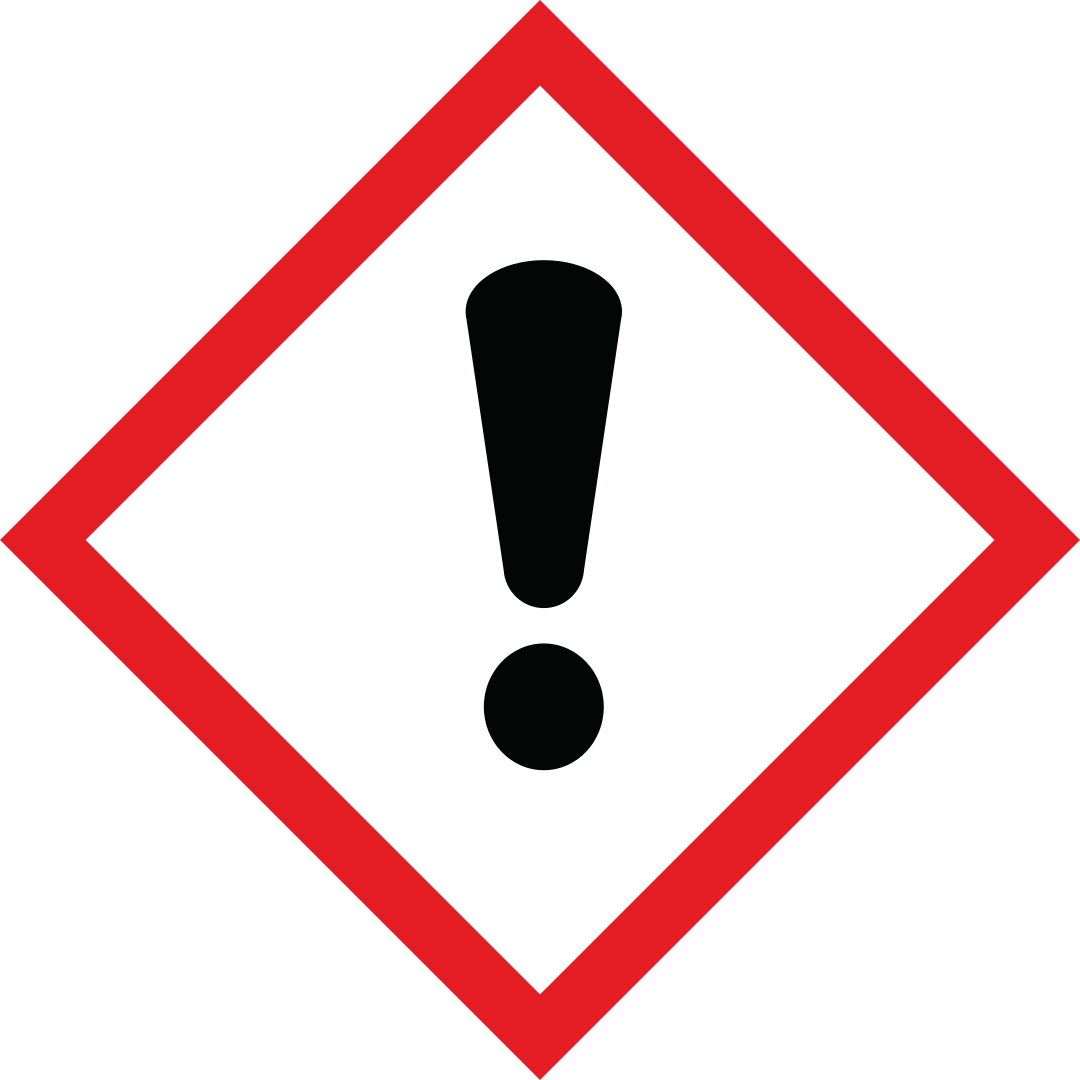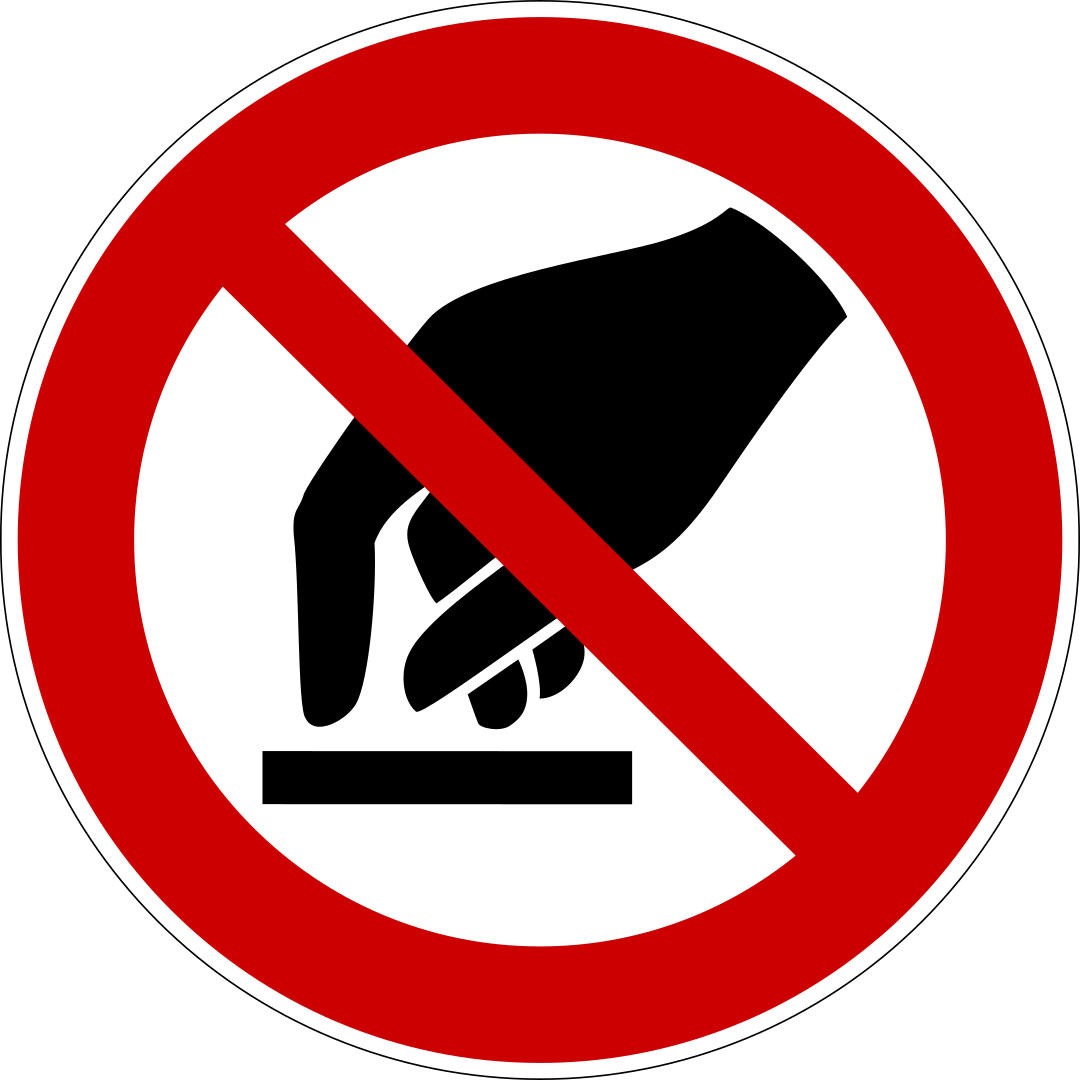You have 45 minutes to answer 50 multiple choice CSCS Health, Safety and Evironment Test questions for Operatives and Specialists. You need to answer at least 45 out of 50 questions correctly to pass. Answers may be reviewed after each question or at the end of the test. Good luck!
List of questions in above test (quick view). Click question box to reveal correct answer.
1. Your manager is making changes to your project's construction phase plan. What should you do?
Give ONE answer
AB
C
D
Correct Answer: B
Explanation: Changes may be made to the construction phase plan as the project develops. You must simply be aware of them and how they will affect your work.
Explanation: Changes may be made to the construction phase plan as the project develops. You must simply be aware of them and how they will affect your work.
2. If an improvement or a prohibition notice is issued, this will have come from which authority?
Give ONE answer
AB
C
D
Correct Answer: B
Explanation: Prohibition and improvement notices are issued by Health and Safety Executive inspectors if deemed necessary.
Explanation: Prohibition and improvement notices are issued by Health and Safety Executive inspectors if deemed necessary.
3. Which of the following is NOT a legal power of Health and Safety Executive inspectors?
Give ONE answer
AB
C
D
Correct Answer: D
Explanation: The HSE is granted extensive legal powers, including but not limited to all of the above.
Explanation: The HSE is granted extensive legal powers, including but not limited to all of the above.
4. What is commonly the cause of occupational asthma in construction workers?
Give ONE answer
AB
C
D
Correct Answer: A
Explanation: Breathing in dust is a common cause of occupational asthma.
Explanation: Breathing in dust is a common cause of occupational asthma.
5. Which type of laser is MORE hazardous if used incorrectly?
Give ONE answer
AB
Correct Answer: B
Explanation: A rotating laser will be hard to look at for more than a moment, but a static laser can cause more damage.
Explanation: A rotating laser will be hard to look at for more than a moment, but a static laser can cause more damage.
6. What is wrong with this tool?
Give ONE answer
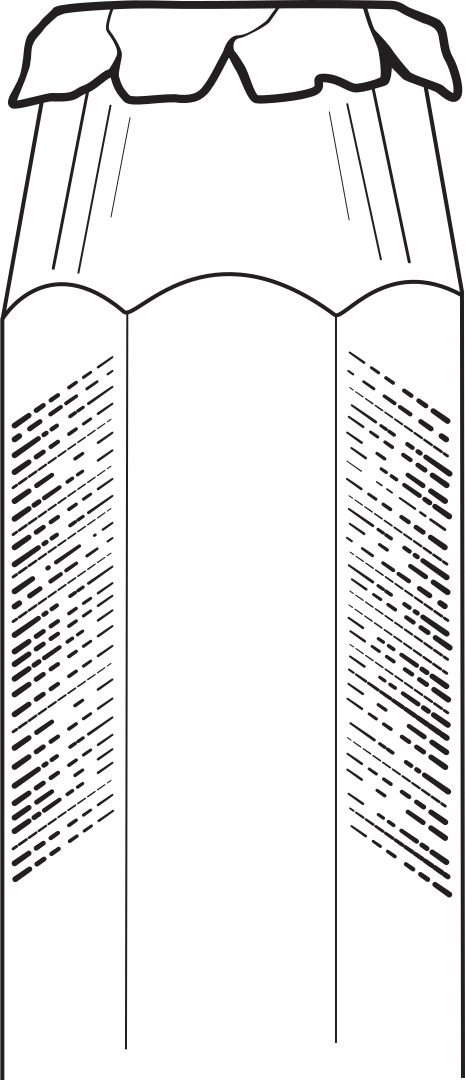
B
C
D
Correct Answer: C
Explanation: This chisel has been worn at the top, creating potential shrapnel that could fly off when it is struck.
Explanation: This chisel has been worn at the top, creating potential shrapnel that could fly off when it is struck.
7. An electricity pylon near your work area is making some unexpected noises. What should you do?
Give ONE answer
AB
C
D
Correct Answer: D
Explanation: If you are unsure about anything, stop and inform your supervisor. Electricity can kill.
Explanation: If you are unsure about anything, stop and inform your supervisor. Electricity can kill.
8. Which of the following is TRUE about getting an electrical shock from overhead power lines?
Give ONE answer
AB
C
D
Correct Answer: C
Explanation: Electricity can arc across the air. This means you can receive a potentially fatal electric shock without being in contact with the power line itself.
Explanation: Electricity can arc across the air. This means you can receive a potentially fatal electric shock without being in contact with the power line itself.
9. What is the MOST important risk created if you use the wrong diamond blade with your tool?
Give ONE answer
AB
C
D
Correct Answer: A
Explanation: Using the wrong disc or blade for a particular tool can cause it to shatter or burst.
Explanation: Using the wrong disc or blade for a particular tool can cause it to shatter or burst.
10. You need to change a drill bit. What should you do FIRST?
Give ONE answer
AB
C
D
Correct Answer: B
Explanation: You should always isolate the power and unplug the tool before changing bits, blades, and guards.
Explanation: You should always isolate the power and unplug the tool before changing bits, blades, and guards.
11. What TWO things must you NEVER do when refuelling a petrol powered hand tool?
Give TWO answers
AB
C
D
Correct Answer: B, D
Explanation: Never refuel where there are ignition hazards - this includes cigarettes, and possibly hot parts of the tool.
Explanation: Never refuel where there are ignition hazards - this includes cigarettes, and possibly hot parts of the tool.
12. What must be present on every hose joint feeding compressed power tools?
Give ONE answer
AB
C
D
Correct Answer: D
Explanation: Whip checks must be in place on hose joints.
Explanation: Whip checks must be in place on hose joints.
13. What is usually the main source of harmful noise on a construction site?
Give ONE answer
AB
C
D
Correct Answer: C
Explanation: Hand held tools are the most common sources of on-site noise.
Explanation: Hand held tools are the most common sources of on-site noise.
14. What are the TWO noise levels at which an employer is legally obliged to take additional safety measures?
Give TWO answers
AB
C
D
Correct Answer: B, D
Explanation: The lower level is 80 dB(A) and the upper level is 85 dB(A).
Explanation: The lower level is 80 dB(A) and the upper level is 85 dB(A).
15. Your employer has designated an area as a mandatory hearing protection zone. Which noise exposure level does this suggest?
Give ONE answer
AB
Correct Answer: B
Explanation: Employers are legally required to make hearing protection mandatory when noise reaches the upper exposure action level. However, they may do so at any time.
Explanation: Employers are legally required to make hearing protection mandatory when noise reaches the upper exposure action level. However, they may do so at any time.
16. Which of the following is NOT a symptom of HAVS?
Give ONE answer
AB
C
D
Correct Answer: D
Explanation: Numbness, tingling, burning, throbbing, and lack of manual dexterity in the fingers or hands are all signs you may be developing HAVS.
Explanation: Numbness, tingling, burning, throbbing, and lack of manual dexterity in the fingers or hands are all signs you may be developing HAVS.
17. Where does the construction industry rank among other UK industries in terms of resource consumption?
Give ONE answer
AB
C
D
Correct Answer: C
Explanation: The construction industry is the highest resource-consuming industry in the UK.
Explanation: The construction industry is the highest resource-consuming industry in the UK.
18. Who must play a role in helping reduce the site's environmental impact?
Give ONE answer
AB
C
D
Correct Answer: B
Explanation: Everybody must contribute to helping reduce the site's environmental impact.
Explanation: Everybody must contribute to helping reduce the site's environmental impact.
19. You need to dispose of water contaminated with chemicals - can you put it down a red drain?
Give ONE answer
AB
C
D
Correct Answer: D
Explanation: Never assume that red drains are suitable places to dispose of hazardous liquids. You must ALWAYS check.
Explanation: Never assume that red drains are suitable places to dispose of hazardous liquids. You must ALWAYS check.
20. An excavation is safe to work in if there are no obvious hazards. True or false?
Give ONE answer
AB
Correct Answer: A
Explanation: The safety of an excavation can be compromised by many seen and unseen factors.
Explanation: The safety of an excavation can be compromised by many seen and unseen factors.
21. Your team has used all the required scanning tools and surveys to identify the approximate location of a cable. What can be done next to locate its exact location?
Give ONE answer
AB
C
D
Correct Answer: A
Explanation: Digging a trial hole by hand will help you precisely and safely locate the cable before beginning work.
Explanation: Digging a trial hole by hand will help you precisely and safely locate the cable before beginning work.
22. How should a stepladder be oriented?
Give ONE answer
AB
C
D
Correct Answer: C
Explanation: Both you and the ladder must be facing the work.
Explanation: Both you and the ladder must be facing the work.
23. A simple piece of scaffolding is interfering with your task's safety measures. What should you do?
Give ONE answer
AB
C
D
Correct Answer: B
Explanation: Scaffolding can only be adjusted or dismantled by competent and trained scaffolders.
Explanation: Scaffolding can only be adjusted or dismantled by competent and trained scaffolders.
24. How must a mobile access tower be moved?
Give ONE answer
AB
C
D
Correct Answer: B
Explanation: Mobile access towers must be moved manually, pushing from the bottom.
Explanation: Mobile access towers must be moved manually, pushing from the bottom.
25. Your work area is next to a power line. How will you know which areas are safe for you to be in?
Give ONE answer
AB
C
D
Correct Answer: D
Explanation: Your employer will set up a barrier that clearly marks the exclusion zone around a power line.
Explanation: Your employer will set up a barrier that clearly marks the exclusion zone around a power line.
26. Your half mask respirator is broken, but your job must be urgently completed. What should you do?
Give ONE answer
AB
C
D
Correct Answer: C
Explanation: You must never work without fully functioning PPE if it is required. This must be provided by your employer.
Explanation: You must never work without fully functioning PPE if it is required. This must be provided by your employer.
27. Besides applying sun cream, what is ONE good way to protect yourself against sun damage?
Give ONE answer
AB
C
D
Correct Answer: D
Explanation: Inspecting your skin for changes or damage will help protect you against the effects of sun exposure.
Explanation: Inspecting your skin for changes or damage will help protect you against the effects of sun exposure.
28. What is good system for controlling hot work?
Give ONE answer
AB
C
D
Correct Answer: A
Explanation: Your employer should have in place a control system for hot work and this may include a hot-works permit.
Explanation: Your employer should have in place a control system for hot work and this may include a hot-works permit.
29. How must flammable liquids be kept?
Give ONE answer
AB
C
D
Correct Answer: B
Explanation: Closed containers must be used to store flammable liquids.
Explanation: Closed containers must be used to store flammable liquids.
30. When storing LPG cannisters in a basement, what should be your first consideration?
Give ONE answer
AB
C
D
Correct Answer: A
Explanation: LPG cannisters should NEVER be stored below ground, for example in basements or cellars.
Explanation: LPG cannisters should NEVER be stored below ground, for example in basements or cellars.
31. Which of the two types of asbestos survey is most comprehensive?
Give ONE answer
AB
C
Correct Answer: C
Explanation: Refurbishment / demolition surveys are more comprehensive.
Explanation: Refurbishment / demolition surveys are more comprehensive.
32. What does HFL stand for?
Give ONE answer
AB
C
D
Correct Answer: C
Explanation: HFLs are highly flammable liquids.
Explanation: HFLs are highly flammable liquids.
33. You are beginning work on a project that will require you work with irritants. What is ONE important precaution you should have in mind?
Give ONE answer
AB
C
D
Correct Answer: C
Explanation: Personal hygiene is crucial when dealing with irritant substances. Skin problems in the groin area are frequently caused by unclean or oily overalls.
Explanation: Personal hygiene is crucial when dealing with irritant substances. Skin problems in the groin area are frequently caused by unclean or oily overalls.
34. What is one thing you should do regularly when working in the sun?
Give ONE answer
AB
C
D
Correct Answer: D
Explanation: You should be regularly checking your skin for new, or changed, moles and warts.
Explanation: You should be regularly checking your skin for new, or changed, moles and warts.
35. What is good practice when it comes to discussing how you are feeling?
Give ONE answer
AB
C
D
Correct Answer: B
Explanation: Having someone you can talk to honestly about how you feel is vital part of being responsible about your health. You do not need to know what is wrong in order to talk about it.
Explanation: Having someone you can talk to honestly about how you feel is vital part of being responsible about your health. You do not need to know what is wrong in order to talk about it.
36. Which of the following is TRUE about so-called "legal highs"
Give ONE answer
AB
C
D
Correct Answer: A
Explanation: So-called "legal highs" are not legally permitted in your system at any level.
Explanation: So-called "legal highs" are not legally permitted in your system at any level.
37. What is the best way to manage mental health issues at work?
Give ONE answer
AB
C
D
Correct Answer: A
Explanation: Always discuss mental health problems with your employer, as accommodations can often be made.
Explanation: Always discuss mental health problems with your employer, as accommodations can often be made.
38. What are TWO key dangers associated with being under the influence of alcohol at work?
Give TWO answers
AB
C
D
Correct Answer: B, D
Explanation: Loss of livelihood is a second key risk alongside the threat to safety.
Explanation: Loss of livelihood is a second key risk alongside the threat to safety.
39. Where should you be storing valuables whilst on site?
Give ONE answer
AB
C
D
Correct Answer: B
Explanation: Your employer must provide you with the means to securely store valuables.
Explanation: Your employer must provide you with the means to securely store valuables.
40. Why is safe manual handling in the workplace so important?
Give ONE answer
AB
C
D
Correct Answer: C
Explanation: Safe manual handling procedures are crucial for safeguarding the health of workers.
Explanation: Safe manual handling procedures are crucial for safeguarding the health of workers.
41. How can you tell if you are developing back injury from manual handling?
Give ONE answer
AB
C
D
Correct Answer: A
Explanation: Back injuries from manual handling can develop over time, and may not be immediately obvious.
Explanation: Back injuries from manual handling can develop over time, and may not be immediately obvious.
42. Whilst handling a heavy load across site, you unexpectedly come across a staircase. What has gone wrong?
Give ONE answer
AB
C
D
Correct Answer: B
Explanation: The safe system of work should identify and communicate any unavoidable hazards you might face whilst manual handling.
Explanation: The safe system of work should identify and communicate any unavoidable hazards you might face whilst manual handling.
43. Which of the following is a MANDATORY sign?
Give ONE answer
AB
C
D
Correct Answer: B
Explanation: This sign indicates head protection is mandatory.
Explanation: This sign indicates head protection is mandatory.
44. Where might you see this sign?
Give ONE answer
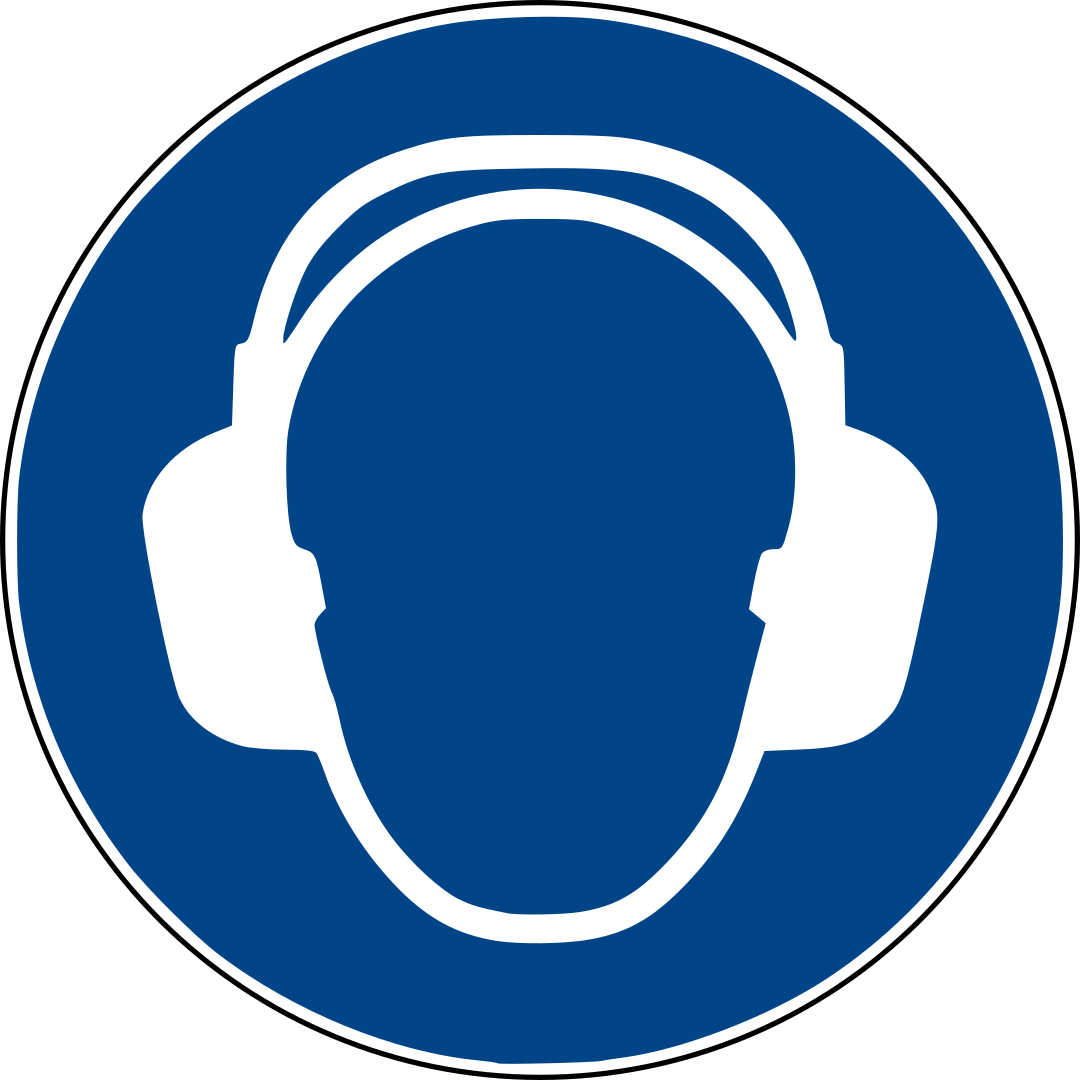
B
C
D
Correct Answer: D
Explanation: This sign indicates ear protection is mandatory, and you are likely to see it in noisy areas.
Explanation: This sign indicates ear protection is mandatory, and you are likely to see it in noisy areas.
45. What is prohibited where you see this sign?
Give ONE answer

B
C
D
Correct Answer: B
Explanation: This sign prohibits any kind of naked flame.
Explanation: This sign prohibits any kind of naked flame.
46. What service can you access where you see this sign?
Give ONE answer
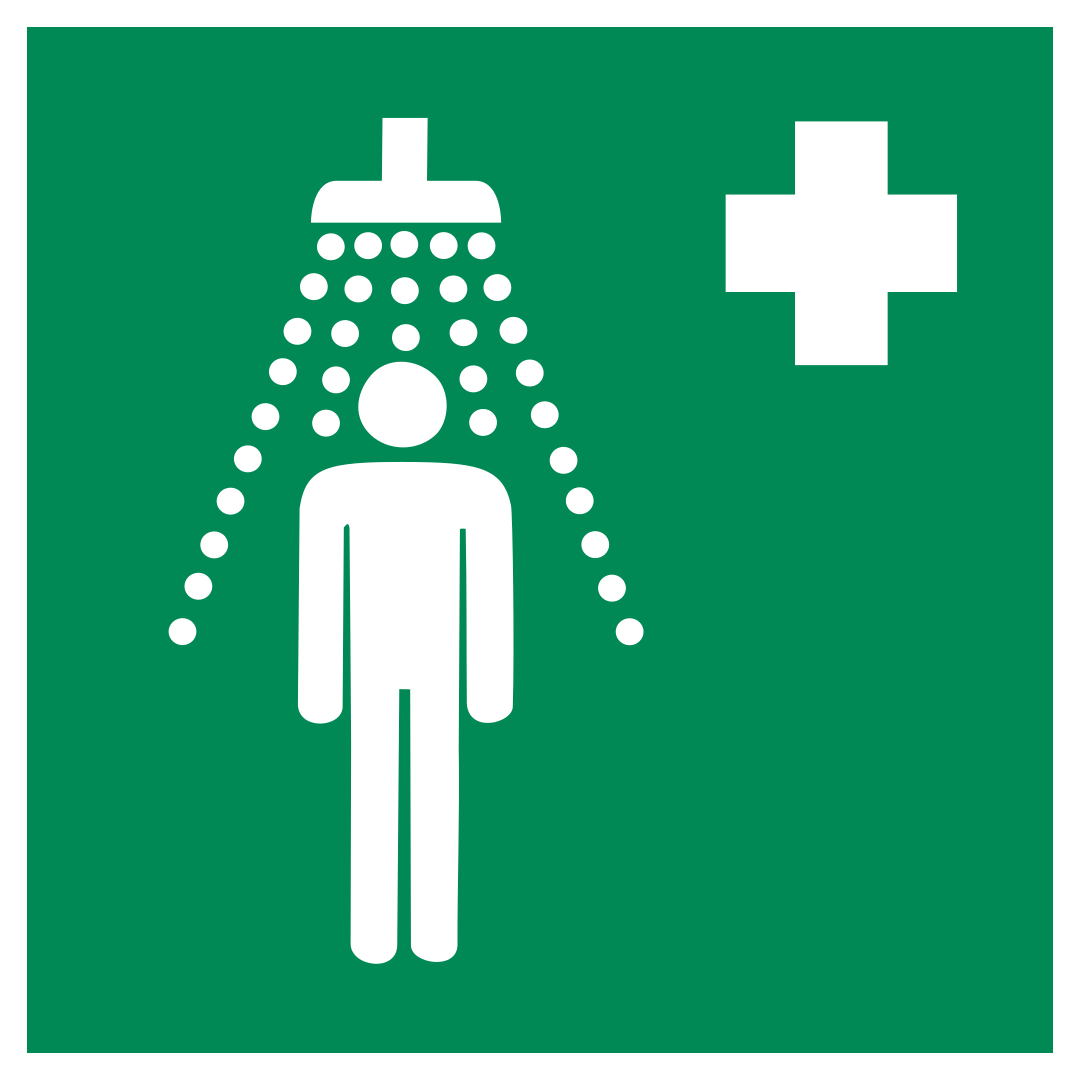
B
C
D
Correct Answer: C
Explanation: This sign marks where you can access safety showers.
Explanation: This sign marks where you can access safety showers.
47. What does this sign indicate?
Give ONE answer

B
C
D
Correct Answer: B
Explanation: This sign is used to indicate explosive materials.
Explanation: This sign is used to indicate explosive materials.
48. Who can operate plant items?
Give ONE answer
AB
C
D
Correct Answer: C
Explanation: You must be authorised, trained, and competent. In some cases, you may also need to be accredited.
Explanation: You must be authorised, trained, and competent. In some cases, you may also need to be accredited.
49. Which TWO types of check must be included when inspecting lifting equipment and accessories?
Give TWO answers
AB
C
D
Correct Answer: B, D
Explanation: Visual and functional checks must always form part of an inspection.
Explanation: Visual and functional checks must always form part of an inspection.
50. What one factor may increase the risk of a telehandler overturning?
Give ONE answer
AB
C
D
Correct Answer: A
Explanation: Telehandlers are more likely to overturn if driven too fast.
Explanation: Telehandlers are more likely to overturn if driven too fast.

